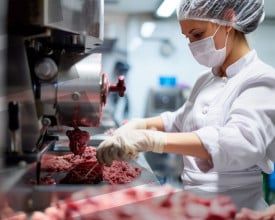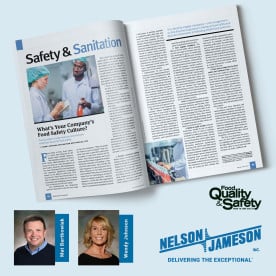Monthly Archives: May 2017
- May 16, 2017
In February I had the opportunity to attend the “Artisan Dairy Producer Food Safety Initiative Workshop” to learn about the Food Safety Modernization Act (FSMA) along with other leaders in the dairy industry here in Wisconsin. It was put on by the Wisconsin Cheese Makers Association and was offered at no expense thanks to a generous grant from USDA-NIFA. Marianne Smukowski, from the Center for Dairy Research (CDR) and Matt Mathison from the Wisconsin Milk Marketing Board (WMMB) were the trainers for the workshop. The workshop was a brief overview of the expectations that the FDA has put before every business in the food industry, from the large to the small plants. This workshop was geared towards the dairy industry, focusing on the hazards that arise, and how to put a detailed plan together to prevent them. One of the hazards that was of special interest, especially due to the sheer amount of news coverage that it has gotten in the previous months, was the elimination and prevention
- May 08, 2017
The National Conference on Interstate Milk Shipments (NCIMS) is scheduled to meet in May 12-17 in Grand Rapids, Michigan and will be considering a proposal for lowering the maximum allowable somatic cell count (SCC) in milk to 400,000 cells per milliliter. The National Milk Producers Federation (NMPF) has long been a proponent of lowering the SCC threshold to 400,000 cells/ml. The current threshold is 750,000 cells per milliliter. The European Union (EU) and other countries have adopted the 400,000 cell/ml standard, placing import bans on any dairy products sourced from farms with SCCs above that level.
SCC levels measure dead white blood cells in milk, an indication of mammary gland infections. Lower levels of somatic cells indicate higher quality milk. Some federal milk marketing orders have a 350,000 cells/ml threshold to determine milk quality premiums. Dairy processors believe that lower SCC thresholds impact cheese yield, taste and shelf life.
Nelson-Jameson





